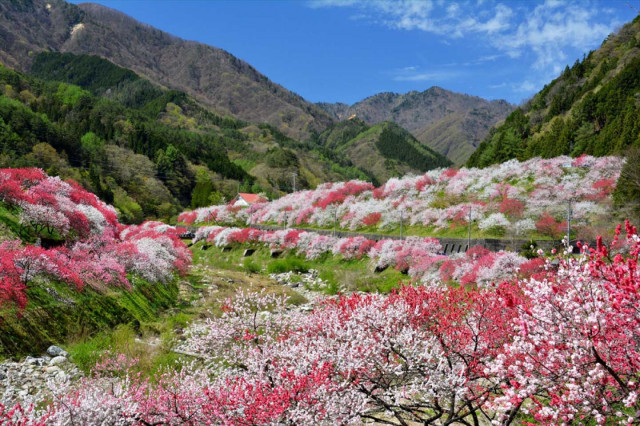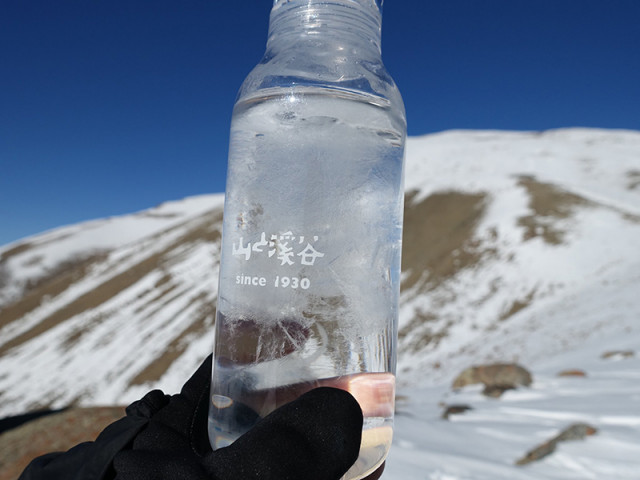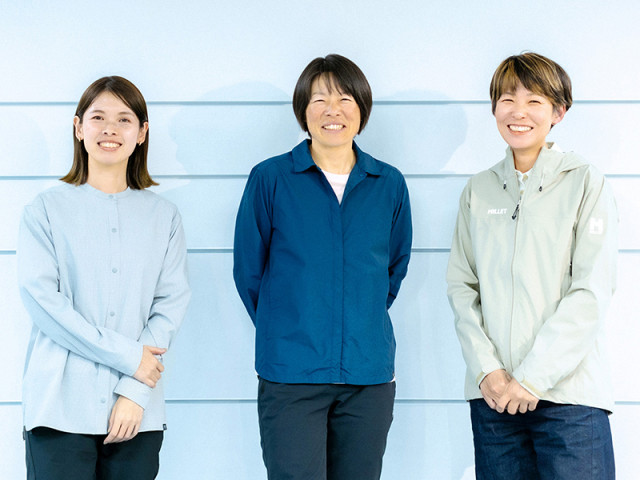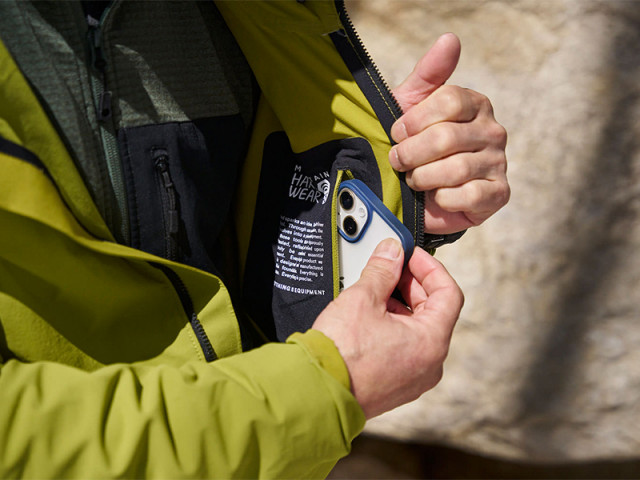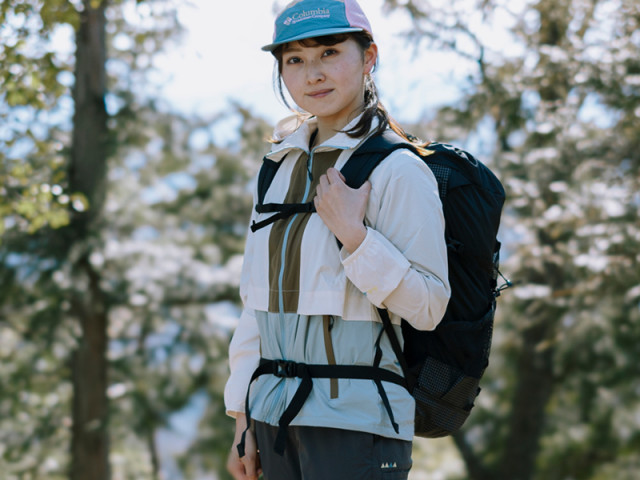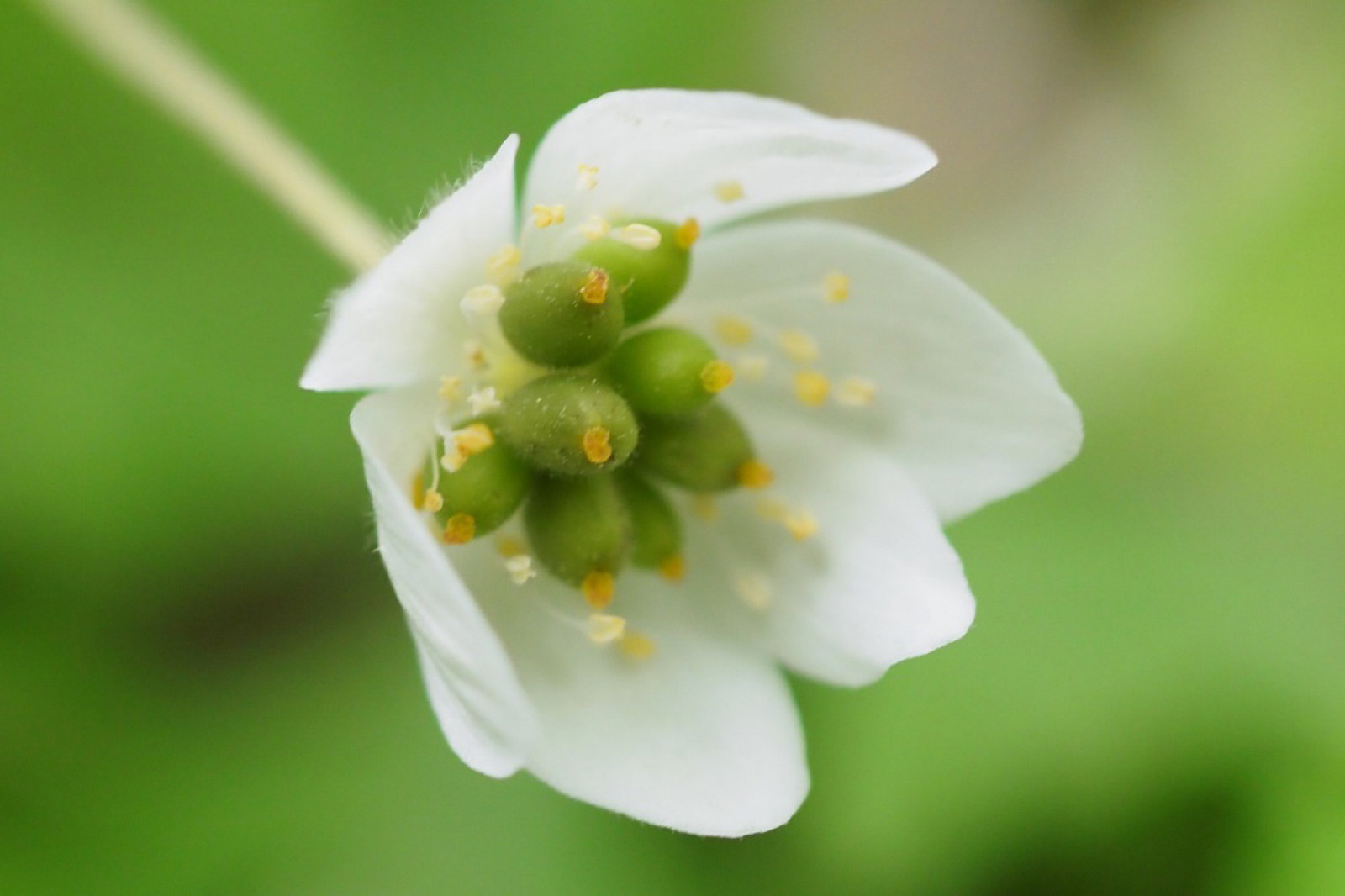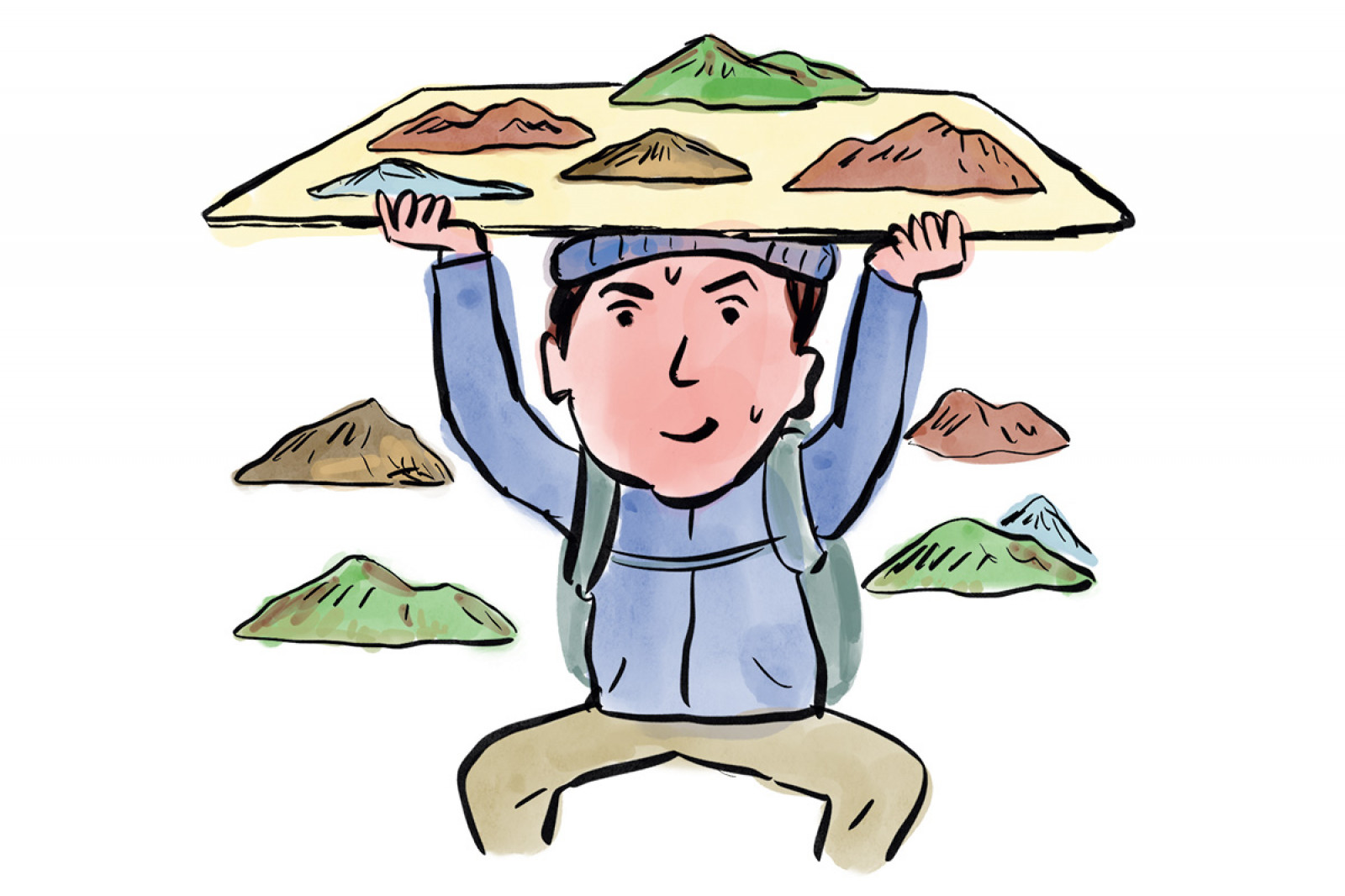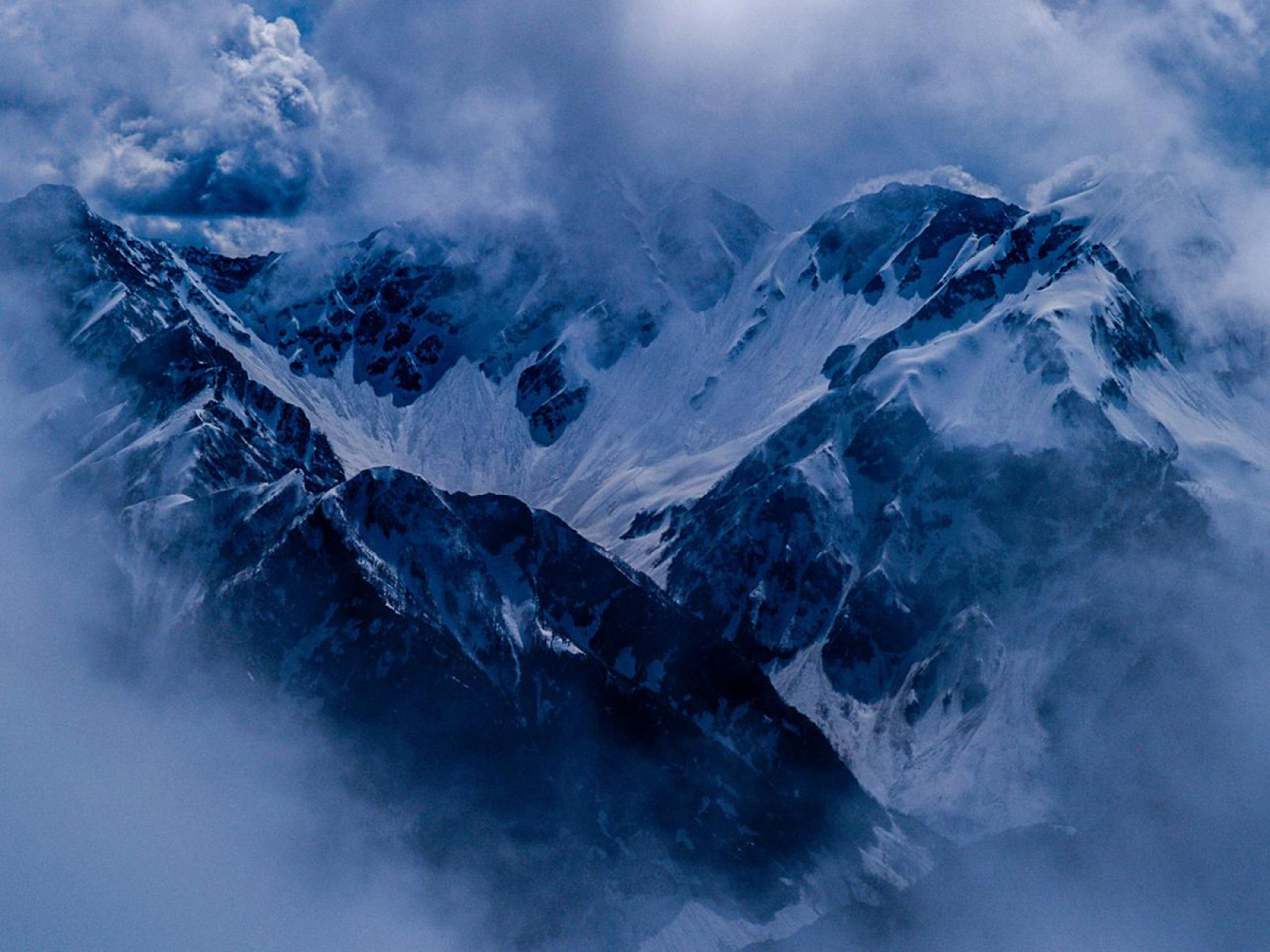両神山の岩稜に、日本創生の祖神様を祀る“ドラゴンロード”の姿を見た―― 奥秩父・両神山
奥秩父の北端、鋸歯状の岩稜が連なる険し山として知られる両神山。古くから山岳信仰の対象とされ、一般的には神犬信仰で知られるが、龍神信仰の史跡も残る。そして実際に登ってみると、そこはまるで山全体が龍の身体のように見えたのだった――。
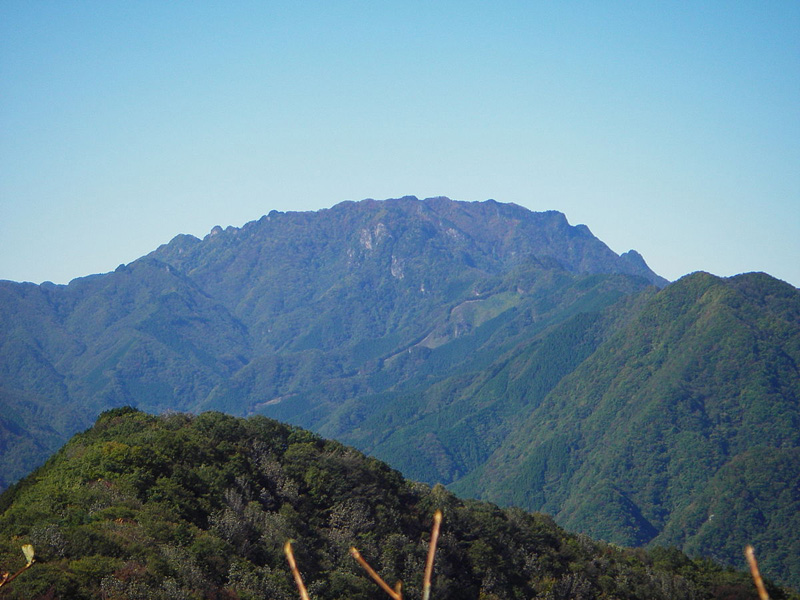
美しい自然と険しく荒々しい岩稜が相対する両神山
春先には山頂一帯にアカヤシオが咲き乱れ、秋には一面の紅葉が特に美しいと言われる――。山中に多くの自然林を残した御山が埼玉県西部・奥秩父に位置する両神山だ。
古来、山岳信仰の霊峰として有名な山であるが、近くの三峰山、武甲山とあわせて秩父三山と称されてきた。霊峰と呼ばれ、その名前に「両神」とつくこの山への想いは必然的に募り、日本神話において神々の両親とされるイザナミ、イザナギを祀ることから両神と呼ぶ説や龍神を祀る山が転じて両神となったなど諸説あるが、いずれも古くからの信仰の山であり、先人達のこの御山への想いを反映しているように思う。
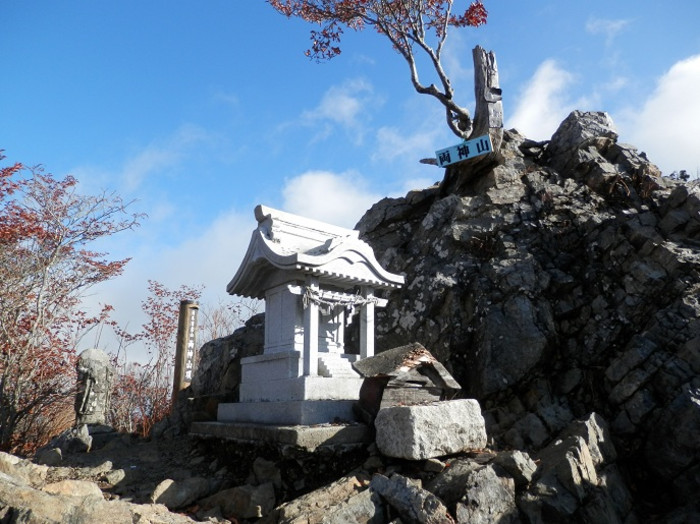
秩父の大自然が魅せる豊かな花々の世界は、春が始まる3月下旬頃から少しずつ色づき初め、春にはアカヤシオの他にミツバツツジの花も咲き誇る。さらにゴールデンウィークの頃から咲くニリンソウの美しさは問答無用に幻想的であり、この世のものとは思えないほどだ。秩父の山々が紅葉で色づく秋口、展望のよい稜線から望む絶景を楽しむ多くの登山客が訪れるのも頷ける。
しかしこの御山のもう一つの特徴は、その稜線――、まるでノコギリの刃のようなギザギザな尾根や急峻な岩壁が無限に続くのではないかと思えるほど荒々しく迫力のある姿にあるとも言える。
花々が咲き乱れる美しい世界と、一方では人を寄せ付けないほどの激しい姿といった相反する世界観に、人は自然そのものである神々の存在を見出したのではないだろうか。
両神山を登拝するにはいくつかのルートがある。難易度の高いルートとしては八丁尾根が有名で、ダイナミックな岩壁、無限とも思えてしまう連続する鎖場が出迎えてくれる。
★関連リンク:八丁尾根を往復・岩峰を鎖で越えるハードな岩稜コース
上落合駐車場から登山口に入り、八丁峠まで約50分の急登。八丁峠を過ぎるといよいよ両神山登拝のコアに身を投じることとなる。鎖場が断続的に現れ、足を進ませるにつれ急峻な岩場がこれでもかと姿を見せつけてくる。行蔵峠(行蔵坊ノ頭)、西岳を過ぎ東岳までの登り下りを繰り返すと、ようやく両神山がその姿を見せてくれる。高度感のある鎖場を何度も登り岩壁に張り付き続けるため、手に汗を握る緊張の連続となる山行だ。
他のコースで登るにも、ある程度の鎖場を体験することになる。先に紹介した八丁尾根とは反対のコースで、いわば両神山登拝におけるメインルートとされているのが日向大谷ルートだろう。標高差こそ八丁尾根ルートの倍近くあるがコースタイムはさほど変わらない。
日向大谷登山口から入山し、しばらくは穏やかな山道を進む。途中には観音像が置かれ登拝者の行き来を見守っている。無人の清美小屋を過ぎたあたりから急登、鎖場がようやく姿を現し、その先に山中の両神神社へたどり着くといったいわゆる表参道としての機能を果たしている。
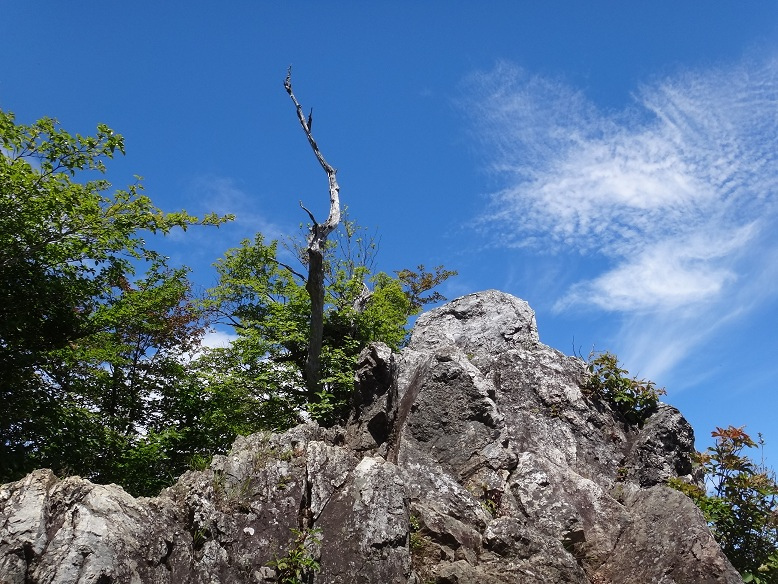
八丁尾根ルート、日向大谷ルートともに片道3時間程度の山行となるのに対し、最後に紹介する白井差新道ルートは最短距離で片道2時間強で両神山を目指す初心者にもやさしいルートだ。しかしある程度整備をされた登山道は私有地であるため、事前に地権者への電話予約が必要なので注意したいところだ。
神犬信仰と共に残る、龍神信仰の姿を登拝道に見る
今では様々なルートが待ち構える両神山だが、その信仰の源泉を探ると第12代天皇陛下である景行天皇の子である日本武尊(ヤマトタケルノミコト)の東征神話に端を発する。これは秩父山塊における共通する信仰形態ともいえる。
三峰山や御嶽山と同様に、日本武尊が東征の折りに神犬(日本狼とされる)の導きにより両神の山に立ち入ったことからもたらされ、その際にイザナミ、イザナギの二柱を祀ったのが両神神社建立のいわれとされている。
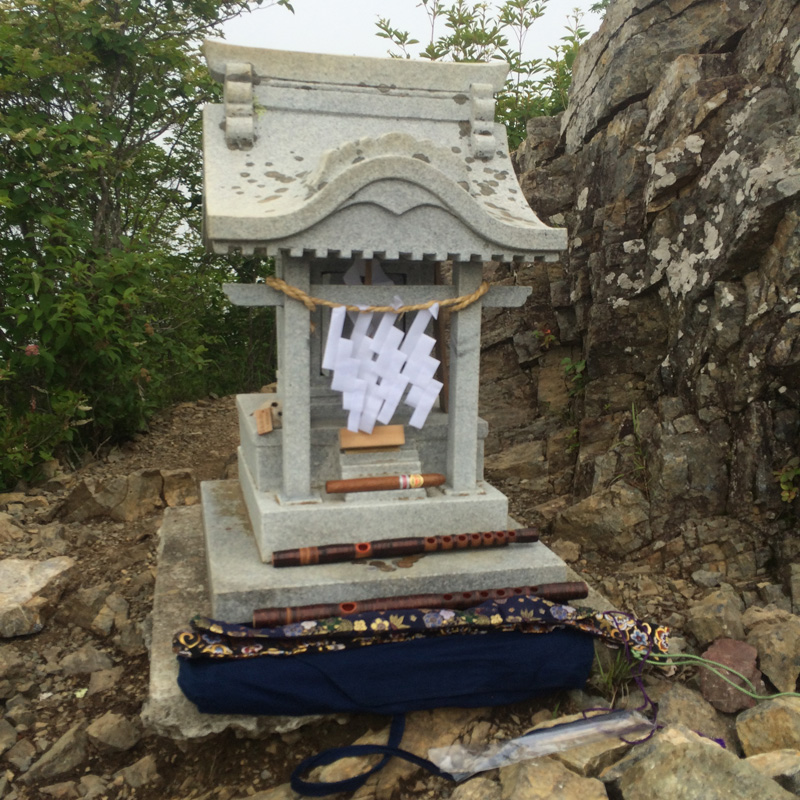
社殿は山頂の剣ヶ峰に奥宮、そこから南方の尾根に本社、麓の日向大谷に里宮が鎮座している。特に江戸時代には山岳修験の格好の行場として修験者の姿が多くみられたようだ。
表参道とされる日向大谷の里宮は近世に当山派修験の観蔵院として広く知られ、その後、時代の流れとともに神仏分離の大波の影響から八日見神社と改称し今に残る。
しかし一方では別軸としての龍神信仰が伝わり、山中には龍頭神社と呼ばれる祠とご神域が存在する。「龍」の「頭」と書いて「りゅうかみ」の山としてその名がついたとも言われているが、たしかに、切り立った尾根を連続で登り下りしたのちの尾根上で振り返ると、まさに山頂を龍の頭に見立て、そこから続くいくつかの峰が曲がりくねった龍体を表現しているようにも見て取れる。

龍神信仰はおそらく日本武尊に端を発する神犬(オオカミ)信仰よりも古く、その土地の自然環境から生まれた自然崇拝のように思えてならない。もし両神(りょうがみ)が龍頭(りゅうかみ)からの転化であったならば、その峰々を連ねる登拝道はさながら龍の背中を歩くドラゴンロードと言えるのではないだろうか。
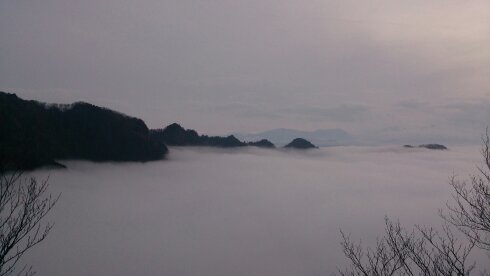
この姿こそが龍神信仰なのではないかと思いを馳せる
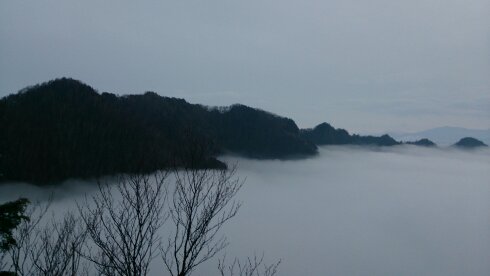
The Dragon Road of Mt. Ryokami (Ryokami-san) enshrining our ancestral gods, said to have created our nation.
In Spring, the top of Mt. Ryokami, one of those mountains located in the Oku-Chichibu area of west Saitama prefecture, surprises you with its wide carpet of gentle pink Akayashio azalea, which are beautifully blooming in profusion. In Autumn, the mountain changes its attire to one of stunning tinted leaves, which cover its whole surface. Large parts of Mt. Ryokami still retain its original natural forest, and you are assured that you will enjoy a new look every time you visit during a different season.
This mountain has long been well known as a sacred mountain, worshipped by the practitioners of the native folk religion. Mt. Ryokami, together with nearby Mt. Mitsumine and Mt. Buko, has been dubbed as the Three Mountains of Chichibu. Ryokami's literal meaning is “both gods” and some say that’s because the sacred mountain enshrines the parent deities of all the deities of the nation, Izanami and Izanagi, mentioned in Japanese mythology. Others preach the theory of a mountain that originally enshrined a dragon deity (ryu-kami), then the name of which changed to the similar-sounding Ryokami. In either case, the background story suggests that Mt. Ryokami has long been a subject of people’s spiritual worship.
The enchanting world of flowers that the rich nature of Chichibu delivers starts its season at the end of March. The beginning of Spring gradually brings colors and the mountain’s surface becomes blessed with the bright purple color of Mitsuba-tsutsuji azalea along with Akayashio azalea mentioned earlier. What’s even more magical is the endless spread of anemone flacida, the tiny white blooms of which are typically seen during Golden Week (end of April-early May). The scenery is very mystical and surreal.
Autumn is another season you don’t want to miss. Many hikers come to the ridgeline of the mountain to enjoy the magnificent autumn leaves tinting the surrounding landscape with variant hues. But I have to highlight another unique trait of this sacred mountain: its super vigorous and rampageous masculine shape, with jaggy sierra-like ridges and precipitous rock walls spreading sidewise infinitely. The coexistence of the harsh contrast between dazzling, feminine blooming flowers and brutally harsh, masculine contours probably inspired people through the ages to imagine this mountain to embody the deities, hence the essense of the natural world.
There are several routes to get to the top of the mountain to visit the enshrined deities.
The most challenging is the famous Haccho O-ne route, which boasts plenty of impressive rock cliffs and successively-steep rock walls and slopes. It’s roughly 50 minutes of steep climbing from the Kami-ochiai parking point to Haccho Pass. After the Pass is when the challenge really starts. Chains nailed into rock walls, kusariba, appear one after another and the scenery only gets more intense, with endless dizzying rocky stretches. After climbing up and down the two peaks, Gyozo Pass and Nishi-dake (“West Peak”), you reach Higashi-dake (East Peak). It’s only then you get to see the silhouette of Mt. Ryokami. You will be hanging onto the rock walls’ many chains for extended periods at high elevations, so this climbing experience is an intense white-knuckle one for sure.
Another route found on the other side of the mountain is the Hinata-Oya route, recognized as the main route for scaling Mt. Ryokami. You will get to experience several kusariba and will be able to cover twice the accumulative elevation distance as the other route in about the same time. This route begins with a mild mountain trail, on which a statue of the Goddess of Mercy (Kannon-zo) watches hikers go by. After passing the uninhabited kiyomi hut you will encounter the first steep climb and several kusariba. Ahead of you sits the Ryokami Shrine in the mountain. This route hence is the official frontal approach to the shrine, omote-sando. Each of these two routes will take about 3 hours’ climbing to reach the top.
The third route is the shortest and quickest route, taking about 2 hours, and is accessible even for beginners. But as this route goes through some privately-owned land, you need to make a call to the land owner in advance should you wish to take it.
Nowadays, any one of these routes will give visitors well-established access to the top. But when did the local worship of and coming into the mountain begin? One theory is backed by the Japanese mythological story in which Yamato Takeru no Mikoto, a son of the 12th emperor, Emperor Keiko (13 BC-130 AD), accomplished an expedition into East Japan. The legend of Prince Yamato Takeru is something that has penetrated deep into the local spiritual beliefs of people throughout the Chichibu region. The shrine on Mt. Ryokami, as with those on Mt. Mitsumine and Mt. Mitake, is said to have been built when the Emperor’s son came to the mountain led by a deity “god dog” (in the form of the native wolf of Japan) during his efforts to conquer East Japan. The story claims that he built Ryokami Shrine to enshrine the paired deities, Izanami and Izanagi. Its innermost shrine (okumiya) stands at the very peak of the mountain, Tsuruga-Mine; the central shrine (honja) is situated on the south ridge; and the in-village shine (satomiya) is at the foot of Hinata-Oya.
During the Edo era (1603-1868 AC), many practitioners of Shugen-do seemed to have come to this mountain for their intense mountain-worship training. The in-village shrine at the end of the front approach on the Hinata-Oya side became a well-known spot as it is the location of the Kanzoin temple of the Shugen-do practitioners of this mountain. Most probably due to the politically-led separation of Shinto and Buddhism, the shrine’s name got changed to Yachihimi Shrine, as it is currently known. Another local spiritual belief long existed is of a dragon deity. You will find, deep inside the mountain’s forest, an another sacred space and a small structure called, again, Ryokami Shrine. Exactly the same name as the one mentioned earlier, but this one using different Chinese characters meaning “dragon” and “head”. If you look back to where you have just come from after hiking the endless ups and downs of the ridges, you will see how the wiggly, winding trail looks exactly like a dragon’s body, with the peak of the mountain being its head. This local worshipping of the dragon deity most probably dates back further than the “god dog” (wolf) worshipping of the earlier story. In my opinion, the worship of the dragon deity is a form of animism that sprang out organically from the local observing their environment in their everyday life. If the name Mt. Ryokami did indeed come from the “dragon head” meaning “Ryukami”, it’s only natural to think of our walking along the ridges as being like riding the dragon, or taking the Dragon Road.
プロフィール

中村 真
1972年、東京生まれ。雑誌『ecoloco』や書籍『JINJABOOK』などを発行する出版社の代表を務める。現在、イマジン(株)代表として、五感に響く出版・イベント・広告などのプランニングや、社会貢献プログラムなど様々なメディア活動を展開中。
2013年より広島県尾道市に「尾道自由大学」を開校し、校長に就任。学生時代より世界を旅し、外から見ることで日本の魅力に改めて気付き、温泉と神社を巡る日本一周を3度実行。
著書に『JINJA BOOK』、『JINJA TRAVEL BOOK』、『JINJA TRAVEL BOOK2』『日本の神さまと上手に暮らす法』など。
登山者のための神社学
山に登っていると、登山道の途中や山頂に祠を見かけることが多い。これらの祠はいったい何なのだろうか? 神社を巡る日本一周の旅を三度も実行した、中村真氏が、あっと驚く山の神社の話を書き綴る。


